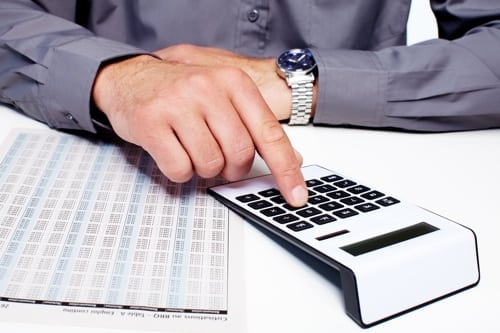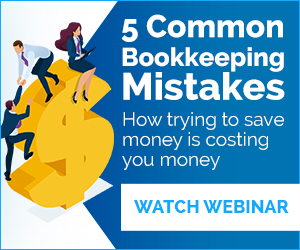The balance sheet shows a business’s current financial data. It is an important document because it illustrates a snapshot of a business’s financial health, including assets, liabilities, and overall shareholder equity. Understanding how to read a balance sheet is critical as a business owner and as an investor.
Balance Sheet Information
Balance sheets will show three financial pieces of data regarding a business: assets (the amount a business owns), liabilities (the amount a business owes), and shareholder equity (what is left after a business owner subtracts liabilities from assets). Unlike an income statement, which documents how a business has performed over a period of time, a balance sheet will only show financial information for a specific point in time. If someone wants to determine how a specific business has fared financially over time, they will need to compare several financial balance sheets from different periods of time.
Assets
Assets are anything a business owner controls, regardless of who owns it. Some assets are easier to understand and calculate, such as cash, office equipment, and business inventory. However, accounts receivable — which is money the business is owed but has not yet received — is also considered an asset. Therefore, the financial ownership of the asset does not matter, but rather, if the business is considered to have possession of something, it is an asset. Another example is if the business purchases a company car and owes monthly payments on that vehicle to the bank. The car may be owned almost entirely by the bank when the car is purchased, but the car is considered an asset as far as the balance sheet is concerned.
Current Assets vs. Long-Term Assets
Businesses often categorize their assets into two types: current assets and long-term assets.
Current Assets
Current assets include anything a business could convert directly into cash within less than one year. This would include cash itself, investments such as stocks or bonds, US Treasury bills, certificates of deposits (CDs), short-term investments, prepaid expenses, or physical inventory that could be sold. Balance sheets will individually record the value of each type of current asset.
Cash and cash-equivalents are very liquid assets that will appear first on a balance sheet. These include certificates of deposit, short-term investments, US Treasury bills, or cash.
Next, accounts receivable will be listed. This includes money made from sales the business has made but has not yet collected. Funds in accounts receivable are typically from sales that have already been made and invoices have been sent by the business to these customers. It is important to note that, when the business does receive the income from these sales, the value of accounts receivable will always decrease and the amount of cash will always increase accordingly.
Finally, inventory is listed as a current asset and will include any goods or physical products that a business can sell. This could include physical inventory, works still in progress, or even raw materials.
Long-Term Assets
Long-term assets are assets that a business will use over a long period of time, such as property, buildings, vehicles, equipment, machinery, or even furniture. Some businesses will call long-term assets “noncurrent assets” or “fixed assets.” These long-term capital investments are things that a business has invested in for the future, such as a large factory or even patents.
Long-term investments are investments that a business cannot liquidate within a year. A business’s tangible assets will include equipment and property, including large factories or plants. Oftentimes, a balance sheet will use different terminology regarding property and equipment, so it is important to examine this area of the balance sheet closely. Ultimately, these types of assets will depreciate over time and there should be a line on the balance sheet that depicts this depreciation.
Finally, intangible assets, such as intellectual property rights, goodwill, patents, licenses, trademarks, copyrights, and customer lists, are all extremely valuable to a business but are considered intangible and are listed last on a balance sheet.
Liabilities
Liabilities are debts that the business owes to others. Debts could be payments owed to banks (such as the example above regarding the purchase of a car), a credit card balance, supplier payments, or rent. Any current or future financial debts or obligations should be listed in the liabilities section of a balance sheet. Like assets, liabilities are categorized into current liabilities and long-term liabilities.
Current Liabilities
Current liabilities are the debts that a business owes to any other party or person in the short term. Accounts payable documents what a business owes to suppliers or services the business has purchased using credit cards or lines of credit. As a business pays these debts off, the cash (current assets listed above) will decrease by the exact amount of payments made.
Additionally, there may be current debt and notes payable owed by the business. Promissory notes that a business owner has issued reflect the agreement that the business will pay a certain person or entity by a certain date. Oftentimes, debts or accounts payable will include the requirement to pay interest on a debt. Therefore, balance sheets will reflect this debt as “interest payable.” These are all short-term liabilities and debts that the business will owe within one year.
Finally, while a company may have long-term liabilities (discussed below), these debts may have portions included in current liabilities. Some long-term debts have portions that are owed within the next year and, if so, that part of the long-term debt will be included in this portion of the balance sheet.
Long-Term Liabilities
Any debt that the business owes that will take them longer than a year to repay will be listed here on the balance sheet. Bonds payable is a common type of long-term liability seen on a balance sheet and the value listed is the amortized amount of the bond issued. Amortization is when a debt is expanded and owed over the entire expected life of the expense.
Other debts and liabilities that are not owed within a year should also be included in this section, such as long-term loans or other debts. Oftentimes, a business will include its obligation to pay certain employees promised pension amounts or other types of deferred compensation from retirement plans offered by the business.
Shareholder (Owner) Equity
Shareholder equity, also known as owner equity, is the amount that the business owner(s) owns free and clear without any additional obligation. After all liabilities are subtracted from the assets, that amount is the total shareholder equity in the business. It is important to note that shareholder equity is not the amount that the business would be worth in a sale. Businesses are valued on much more than the shareholder equity, including such things as goodwill in the community and other factors like projected growth. The following lists some different ways to handle shareholder equity.
Retained Earnings
If a business has had a successful quarter or year and shareholder equity is substantial, an owner may choose to pay out all shareholder equity to the shareholders. If a business decides to do this, the money paid out will be called “dividends.” However, in most cases, a business will reinvest this money back into the business. In some cases, a business owner may give some of the retained earnings in the form of dividends to shareholders and retain some of it to reinvest in the business.
Share Capital
Oftentimes, businesses have investors who invested significant sums of money into the business. “Share capital” is the value of those investments in the business. If an investor invests $50,000 in your business, the balance sheet counts that investment as $50,000 in cash, as well as part of the share capital.
Stocks
If a business is large enough, it may have stock ownership as an option for investors. If an investor owns common stock in the company, it means that the business is traded on the stock market exchange. Some businesses issue preferred stock as well as common stock. Preferred stockholders have a priority claim on any assets of the business. These types of stock, as well as treasury stock, are listed in this section of the balance sheet.
Negative Equity
In some cases, a business will have negative equity after all calculations, which means that the assets of the business will not completely cover the liabilities or debts of the business. This is common, especially in new businesses.
Reading the Balance Sheet
A balance sheet will have rows and columns of the business’s assets, liabilities, and money owed by shareholders.
Assets will be listed in order of how liquid they are (how quickly they can be converted into cash), and liabilities are typically listed in order of their due dates. In some cases, shareholder equity will follow assets and liabilities on the balance sheet.
In all cases, the business’s assets should always be equal to the liabilities and shareholder equity combined. In many cases, the balance sheet will provide data from the previous year, or even multiple years, to allow for comparison to see how a business is evolving financially over time.
Looking at this comparison, you can determine if a business has more assets, more debt, more investments in equipment or facilities, or if the amount that payers owe a business is growing. A great deal of information can be gained from examining the trends of a business through balance sheets as well as other financial documents.
Benefits of a Balance Sheet
The balance sheet is named this way because both sides must add up to the same amount. The formula used is Assets = Liabilities + Shareholder Equity. This unbreakable equation separates assets on one side and liabilities and shareholder equity on the other.
Balance sheets are useful to business owners and current and future investors since they show exactly how much a business is worth. Investors are often interested in learning the financial details of a business, such as working capital or debt-to-equity ratio, before deciding to invest.
Working capital is the money that a business has available for their day-to-day operations and can be found on a balance sheet by subtracting current liabilities from current assets. Additionally, the debt-to-equity ratio will tell investors how much of a business’s financing comes from creditors vs. investors and can be found on a balance sheet by taking the total liabilities and dividing by shareholder equity. This is important to an investor because, the higher this ratio, the riskier the investment.
For a business owner, the benefits of a balance sheet include having a snapshot of the financial health of the company. A balance sheet will detail assets and liabilities, as well as company stock, all in one place. This allows a complete picture of where the company is financially at any given point in time. When analyzed with other documents, such as a cash flow statement or an income statement, a complete financial picture of the company takes shape.
Contact Anderson Advisors
Understanding how to read a balance sheet can take time. However, this financial document provides a great deal of insight into the financial health of a company. A business’s balance sheet is critical for investors to determine whether they should invest, and provides insight into the financial trajectory of a business that is vital to a business owner.
Anderson Advisors offers business and legal guidance for business owners and real estate investors. If you are struggling with your financial documents or would like assistance with any of your bookkeeping needs, call 866.896.6141 for a complimentary consultation, or click here to schedule now.


